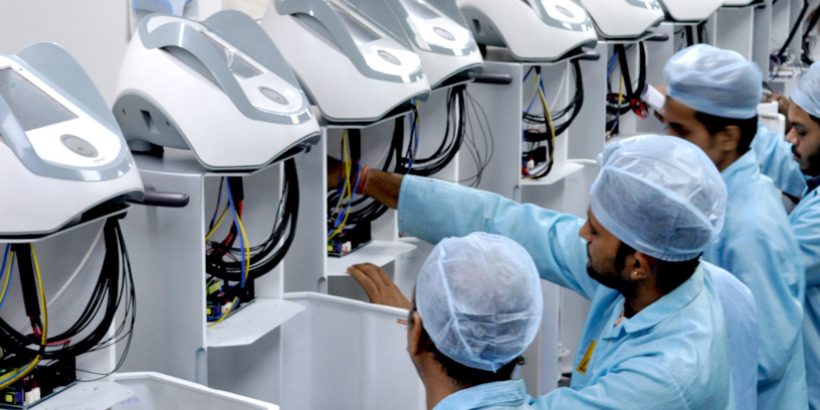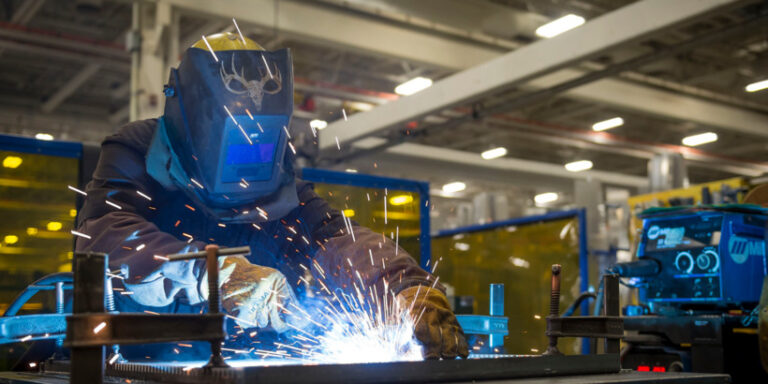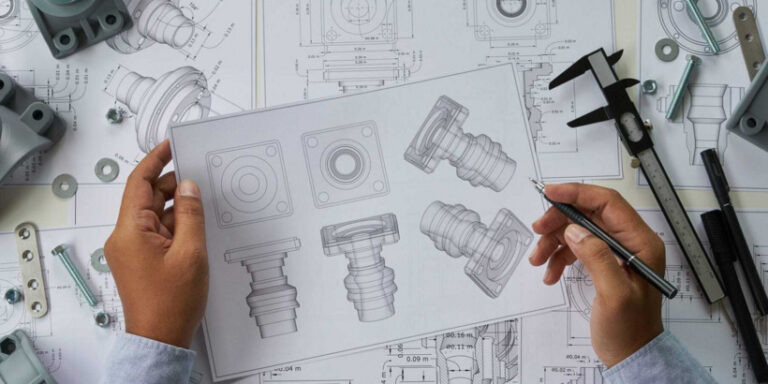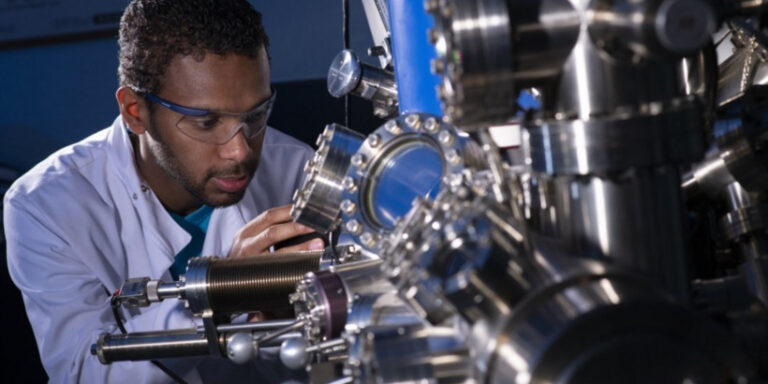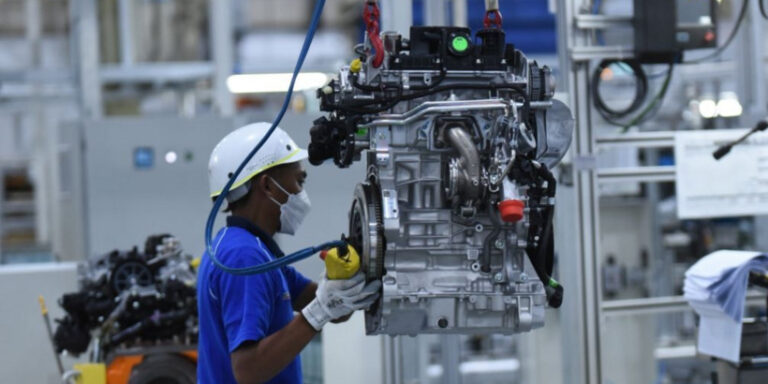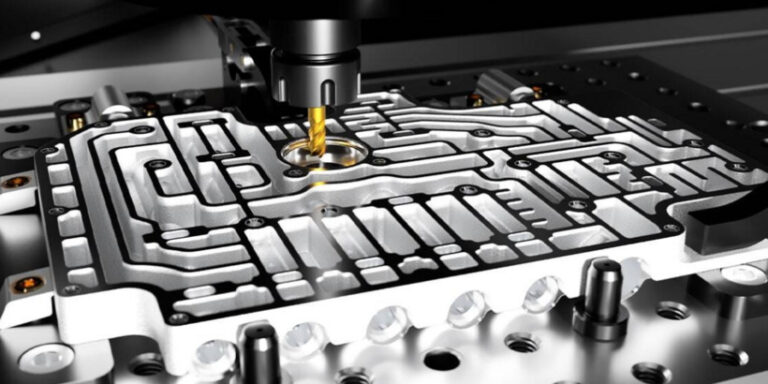Why Just-In-Time Manufacturing Is The Future Of Production
Hey there, have you ever heard of just-in-time (JIT) manufacturing? It’s a production strategy that has been gaining popularity in recent years and is quickly becoming the future of manufacturing.
In this article, I’ll explain why JIT is so important for businesses today.
Firstly, what exactly does JIT mean? Essentially, it means producing goods or services only when they are needed rather than stockpiling them in advance. This allows companies to reduce waste and costs associated with excess inventory while also increasing efficiency and productivity.
With today’s fast-paced market demands, JIT enables manufacturers to respond quickly to changing customer needs and preferences.
So let’s dive deeper into why JIT is the way forward for modern-day production.
What Is Just-In-Time Manufacturing?
Oh, the joys of supply chain optimization and inventory management. Two phrases that could make anyone’s eyes glaze over with boredom. But hold on a second, because when it comes to manufacturing, these concepts are anything but dull.
In fact, they’re downright exciting – especially when you consider the magic they can create together in the form of just-in-time manufacturing (JIT). JIT is all about minimizing waste by producing goods only as needed and keeping inventory levels low.
This lean approach not only saves money but also increases efficiency, flexibility, and customer satisfaction. So buckle up and get ready for a wild ride through the world of JIT manufacturing!
The Benefits Of Jit Manufacturing
Now that we understand what JIT manufacturing is, let’s talk about the benefits it brings.
Firstly, dynamic scheduling allows for greater flexibility in production planning as orders are fulfilled on an as-needed basis. This means more efficient use of resources and a reduction in waste.
Secondly, inventory optimization ensures that only necessary materials are stocked, reducing excess inventory costs and freeing up space in warehouses or factories.
Overall, these two aspects work together to create a streamlined and cost-efficient production process. By adopting JIT manufacturing practices, companies can better respond to changes in demand and improve their bottom line without sacrificing quality or customer satisfaction.
How Jit Manufacturing Reduces Costs
I’m really interested in learning more about how JIT manufacturing reduces costs, specifically when it comes to reducing inventory costs and streamlining production processes. Can you tell me more about how those two factors help reduce costs?
Reducing Inventory Costs
As a firm believer in the advantages of outsourcing, I have come to understand how just-in-time (JIT) manufacturing can significantly reduce inventory costs.
By implementing JIT strategies, companies can optimize their supply chain processes by only ordering what is necessary for immediate production needs, rather than overstocking on raw materials and finished goods.
This not only reduces excess inventory storage costs but also minimizes the risk of stock becoming obsolete or damaged during prolonged storage periods.
Ultimately, through effective supply chain optimization using JIT methodologies, businesses can achieve lower inventory carrying costs while ensuring an uninterrupted flow of products to meet customer demand.
Streamlining Production Processes
Now that we’ve established how JIT manufacturing can reduce inventory costs, let’s dive into another essential aspect of supply chain optimization: streamlining production processes.
As someone who has seen firsthand the benefits of automation and predictive analytics in improving efficiency, I believe that these tools are crucial in achieving optimal operations.
By automating repetitive tasks and using data to make informed decisions, companies can optimize their workflows for maximum output with minimal waste.
Additionally, predictive analytics can help businesses anticipate demand and adjust production accordingly, ensuring that they meet customer needs while avoiding excess inventory buildup.
Ultimately, by streamlining production processes through automation and predictive analytics, businesses can increase productivity while reducing operational costs.
Jit Manufacturing And Improved Efficiency
Imagine a world where every product you buy is made just for you, with no excess inventory or wasted materials. This is the future of production through just-in-time manufacturing. By implementing automation strategies and supply chain optimization, companies can produce goods only when they are needed, reducing storage costs and minimizing waste.
Not only does this approach save money, but it also improves efficiency in multiple ways. Here are five benefits that JIT manufacturing brings:
- Faster delivery times
- Improved quality control
- Lower production costs
- Reduced carbon footprint
- Increased customer satisfaction
By using JIT manufacturing techniques, businesses can streamline their operations while providing customers with high-quality products at lower prices. The days of mass-produced items sitting on shelves waiting to be purchased are coming to an end as we move towards a more sustainable and efficient way of producing goods.
Jit Manufacturing And Market Responsiveness
I truly believe that JIT manufacturing is the future of production, especially when it comes to market responsiveness. One reason for this is supply chain optimization. With JIT, companies can reduce inventory costs by only producing what is needed and when it’s needed. This means less waste and more efficient use of resources. Additionally, new technologies are making JIT even more feasible and effective than ever before. The use of data analytics and automation tools can help companies better predict demand and optimize their production processes accordingly.
To illustrate how JIT manufacturing works, let’s take a look at this table:
| Traditional Manufacturing | JIT Manufacturing |
|---|---|
| Produces in large batches | Produces on demand |
| Requires long lead times | Has short lead times |
| Has high inventory levels | Has low inventory levels |
As you can see, traditional manufacturing tends to produce in large batches without considering customer demand or market trends. On the other hand, with JIT manufacturing, companies respond quickly to changes in demand by producing only what is necessary at any given time.
In summary, I firmly believe that JIT manufacturing is the key to achieving greater market responsiveness moving forward due to its ability to optimize supply chains while incorporating new technologies like automation and data analysis into the process.
Jit Manufacturing And Quality Improvement
Did you know that companies who have implemented JIT manufacturing have seen a 50% reduction in defects and quality issues?
This is just one of the many reasons why JIT manufacturing has become such an important aspect of production. By focusing on productivity optimization and process automation, companies can streamline their operations to eliminate waste and improve efficiency.
Additionally, by utilizing JIT principles, manufacturers are able to respond quickly to customer demands while minimizing inventory costs. And with technology continuing to advance at a rapid pace, there has never been a better time to invest in JIT manufacturing for your business.
So if you’re looking to improve your company’s overall performance and stay ahead of the competition, consider implementing JIT methods into your production processes today.
The Future Of Jit Manufacturing
When it comes to manufacturing, the future is all about JIT.
With lean production and agile supply chains becoming increasingly important in today’s market, just-in-time manufacturing offers an efficient and effective solution for businesses looking to stay ahead of the game.
By focusing on reducing waste and maximizing efficiency through real-time inventory management, JIT allows companies to produce only what they need when they need it cutting down on costs while also improving quality control.
Furthermore, with the rise of e-commerce and the demand for fast shipping times, JIT helps ensure that products can be manufactured and delivered quickly without sacrificing quality or safety standards.
All in all, just-in-time manufacturing represents a strategic shift towards more intelligent and streamlined production processes that are better suited to meet the demands of modern consumers making it a truly exciting development for anyone involved in this industry.
Conclusion
In my opinion, Just-in-Time (JIT) manufacturing is the future of production. The benefits are undeniable and it can revolutionize an entire organization’s approach to manufacturing.
JIT Manufacturing solves many issues that traditional methods cannot address. Firstly, by reducing costs through inventory reduction, waste minimization, and improved efficiency, companies will be able to operate with a leaner budget while still producing high-quality products.
Secondly, market responsiveness will enable businesses to adapt quickly to changes in demand or customer preferences. Finally, quality improvement means fewer defects and higher satisfaction rates among customers.
In conclusion, JIT Manufacturing has become increasingly popular for its effectiveness in meeting modern business needs. Its relevance in today¡¯s fast-paced world cannot be overstated as it offers numerous advantages over traditional approaches such as lower costs, improved efficiency and increased flexibility.
Companies that adopt this method are better positioned for success than those that don¡¯t. Therefore, JIT Manufacturing is an excellent strategy for anyone who wants to stay competitive in the industry now and into the future.
